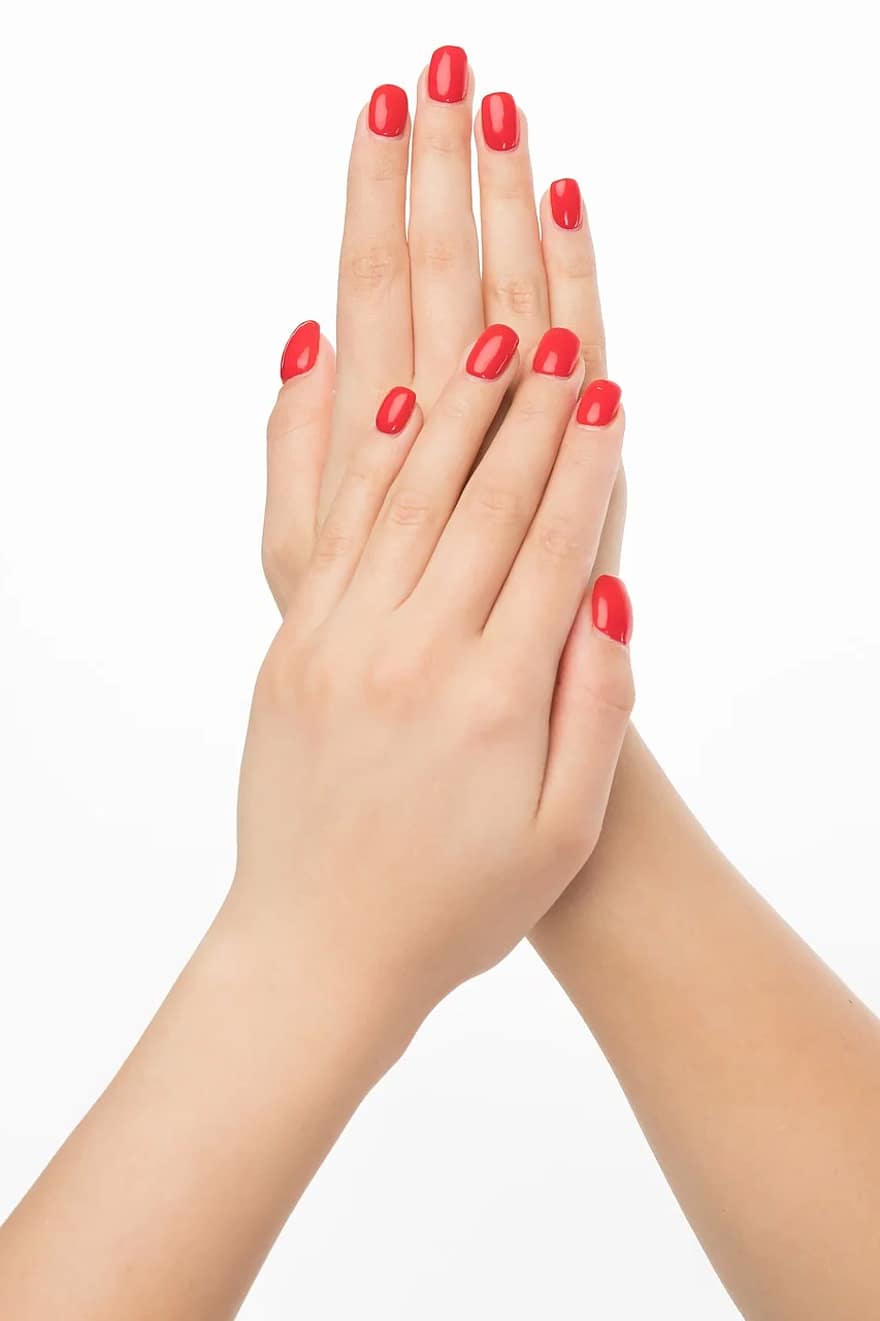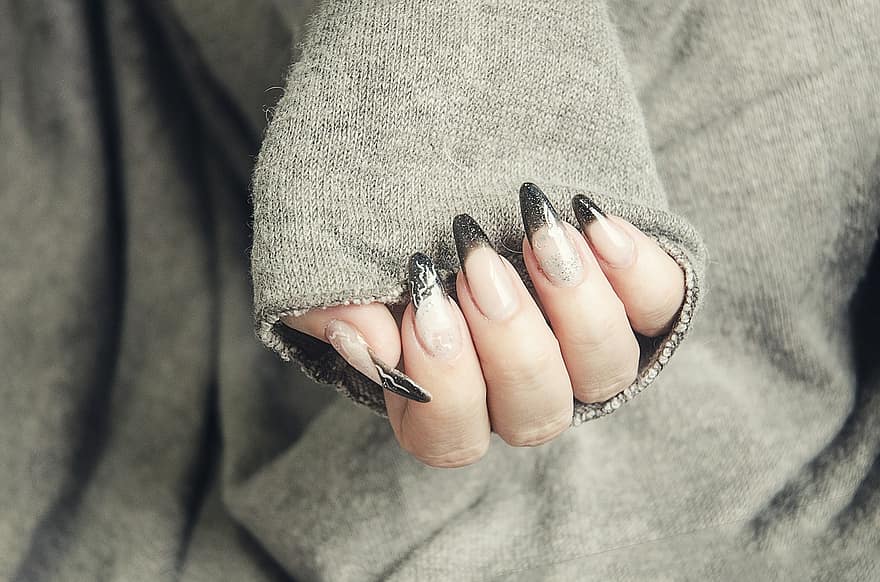Summary
– Step 1: Repair brittle nails
– Step 2: Nourish brittle nails
– Step 3: Take care of grooved nails
– Step 4: Treat stains on the nails
– Step 5: Pay attention to the color of your nails
– Step 6: Consult in case of onycholysis
Nails are a part of the body that we don’t think much about but are likely to present different problems or pathologies.
Precisely because we don’t talk about them much, it is not always clear what to do about them. Here is how to take care of your nails according to the different cases.
1. Repair brittle nails
Nails are brittle when dehydrated, do not contain enough iron, or are victims of a pathology such as psoriasis. Often, dehydration of the nails is due to drying chemicals, such as certain nail solvents.
To make your nails less brittle :
– Avoid contact with toxic products: use a fatty solvent without acetone.
– Avoid contact with hard water by using gloves to clean, wash dishes, etc.
– Do not cut your nails with scissors or nail clippers; prefer cardboard nail files.
– Soften your nails with emollient products containing vegetable oil (sweet almond or jojoba oil, for example).
If the nail splits lengthwise :
– Use a hardening nail polish and a moisturizing hand cream.
– Favour the treatment of the cause, i.e., deficiencies in iron, zinc (both of which you will find in the chicken breast), and vitamin B (B6 and B8, in particular).
Also, to facilitate iron fixation, you should limit your consumption of breadfruit and starchy foods.
2. Feed brittle nails

The nails can be incredibly fragile; we then speak about eggshell nails. They are thin, brittle, and chronically soft. To fight against this problem :
– Make sure you get enough calcium to keep them healthy.
– Eat foods that contain sulfur: onions, cucumbers, cabbage, turnips, eggs, seafood.
– Make them stronger by taking magnesium chloride regularly.
– Also, don’t gnaw them!
3. Take care of grooved nails
Striated nails are nails marked by aging (like wrinkled skin). If these striations are not due to pathologies, they may be caused by repeated trauma following childbirth or a lack of care.
Here are the steps to adopt for striated nails:
– File them with a cardboard file or use a disinfected nail clipper before each use.
– Clean the area under the nail, near the fingertip, with a tip dipped in lemon juice or hydrogen peroxide.
– Dry the nail and then moisturize it with vegetable oil or moisturizing cream.
– Use an anti-stripe base that can be applied like a nail polish: the silicon it contains helps smooth the nail and protect it.
– Use a four-sided polisher to file, smooth, polish, and shine your nails. Pass the adapted face on the nail for a few tens of seconds.
– Expose yourself reasonably to the sun for vitamin D supplementation and drink plenty of fluids.
4. Treat nail stains

White spots
The white spots on the nails are called leukonychia. Here again, it is the lack of care of the nails that is the main culprit. They can also be the result of psoriasis or fungal infections (but not calcium deficiency).
If they are indeed due to a lack of care, the recommendations are the same as above (see steps 1 and 3).
However, it is necessary to consult a doctor or dermatologist if they are due to pathology.
Note: Intensive manicures are experienced as trauma to the nail; in this case, it may be necessary to leave your nails alone for a while.
Brown spots
Like white spots, brown spots are generally not serious. They can be consecutive:
– to a shock (commonly called a pinch), the brown area being the small collection of blood that formed at that time;
– a deficiency of vitamin B12, which you will find in fish, shellfish, and meat (red and white).
On the other hand, if the task has no specific explanation and is cross-cutting, it is best to consult to rule out melanoma risk (infrequent, but possible).
5. Pay attention to the color of your nails

Blue nails
Poorly vascularized, the nails will present a bluish tint. To solve this circulatory problem, massage the hands very regularly.
Orange nails
When the nails take on an orange tint, this is usually due to oxidation of the varnish. In this case, sand the nail carefully with a four-sided polisher.
Note: Repeated use of dark nail polish often results in staining.
Yellowish nails
Generally, yellowish nails are not severe. It is either psoriasis or only stains caused by smoking.
However, it can also be due to diabetes (hyperglycemia) or chemotherapy treatment.
In the latter case, use a polisher regularly to remove these stains.
Greenish nails
If the nails take on a greenish tint, it is because they have fungus (mold). In this case, it is necessary to consult a doctor quickly for treatment.
Note: You should be careful not to contaminate healthy nails when cutting them. To do this, remember to disinfect your nail clippers with alcohol after using them on the affected nail.
6. Consult in case of onycholysis
Onycholysis refers to the lifting of the nail. This lifting is generally due to the use of too corrosive products.
In this case, it is preferable to consult a doctor if the problem persists.
Necessary material to take care of your nails
| Anti-Stripe Silicon Base | From $7. |
| Nail hardener | From $7. |
| Capsules of phytotherapy | According to plants. |
| Vegetable oil | About $7 per 50 mL. |
| Cardboard nail file | From $4 the $10. |
| Four-sided nail polisher | From $4. |


